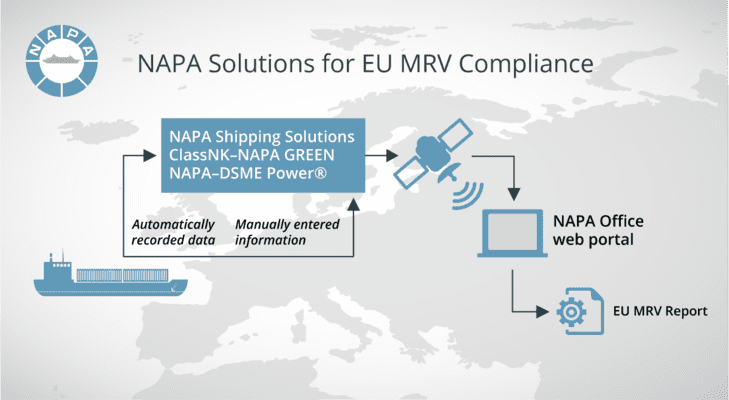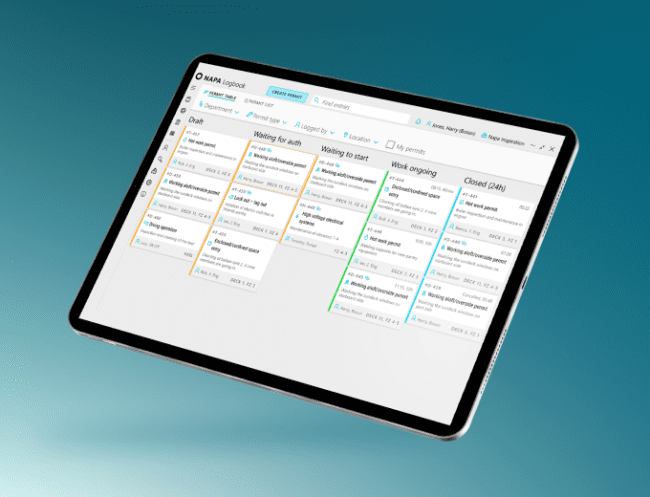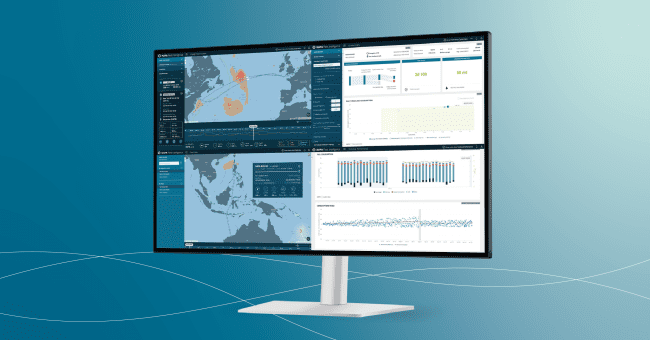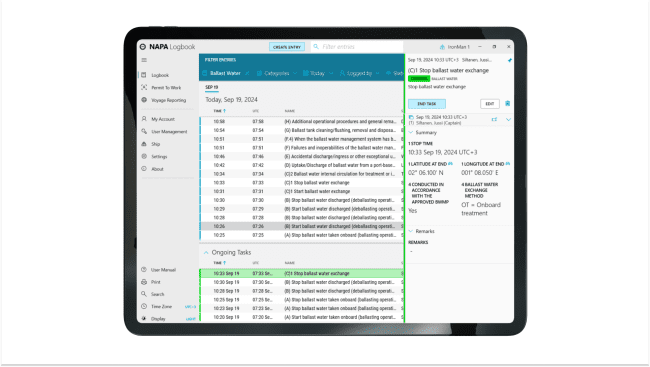NAPA and EU MRV: Frequently asked questions
The deadline for submitting EU MRV monitoring plans is approaching fast. Companies must submit a verified monitoring plan by 31st August 2017, containing their data collection method.
If you’re an existing user of ClassNK-NAPA GREEN, NAPA Shipping Solutions, or NAPA-DSME Power®, the good news is that you’re already covered. This software can be used to monitor and report CO2 emissions and other relevant operational information to meet EU MRV requirements, with support for both voyage-by-voyage and annual reporting.
We’ve made it simple and straightforward to generate reports and manage your data. The new EU MRV functionalities integrate seamlessly with existing reporting, requiring a minimum of additional input and oversight from crew and office staff.
Frequently Asked Questions
What is EU MRV?
The EU MRV (Monitoring, Reporting, Verification) requires ship owners and operators to annually monitor, report, and verify CO2 emissions for vessels larger than 5,000 gross tonnage (GT) calling at any EU and EFTA (Norway and Iceland) port.
Companies must present a monitoring plan by 31st August 2017, containing the data collection method. Reports are then submitted online via the EMSA portal either annually or on a voyage-by-voyage basis per ship. Data collection takes place on a per voyage basis and starts 1st January 2018.
How do I use NAPA software to meet EU MRV requirements?
Users can generate EU MRV Reports with NAPA Voyage Reporting, client-server software used on board any kind of marine vessel to provide operational reporting to the company’s office.
NAPA Voyage Reporting has two user interface software clients, NAPA Logbook and NAPA Voyage Reporting. The NAPA Logbook client is used to input any manual data such as departure and arrival. The collected data and reports of the CO2 emissions are sent from ship to shore via satellite, then stored in the proprietary Internet cloud service NAPA Office. Reports are available via the NAPA Office web portal, where they can be saved and sent out for verification.
NAPA Voyage Reporting creates a list of consecutive voyages, each of which contains the emissions data and the other relevant input information.
Various CO2 emissions sources may be monitored and recorded, such as main engines, auxiliary engines, gas turbines, boilers and inert gas generators, as well as fuel types for each engine. Users can combine manual and automatic consumer inputs if necessary.
What onboard input is required?
NAPA solutions enable users to generate reports with minimum onboard input. Crew must input phase changes (changes of activity) manually to NAPA Voyage Reporting.
How do I generate a report using NAPA software?
The MRV report can be exported from the NAPA Office web service as a CSV document. The NAPA Office report contains the mandatory parameters:
a) port of departure and port of arrival including the GMT date and hour of departure from berth and arrival to berth;
b) amount and emission factor for each type of fuel consumed in total;
c) CO2 emitted;
d) distance travelled, distance will be the actual distance;
e) time spent at sea;
f) cargo carried, figure varies with the ship type;
g) transport work, determined by distance travelled with the amount of cargo carried.
If I’m using NAPA software to meet EU-MRV requirements, will I be covered for upcoming IMO fuel consumption data collection system requirements?
Yes. The IMO’s system specifies a mandatory fuel consumption data collection system for international shipping, requiring ships of 5,000 GT and above to start collecting and reporting data to an IMO database from 2019. Vessels using ClassNK-NAPA GREEN, NAPA Shipping Solutions or NAPA-DSME Power® to meet EU-MRV requirements will also be able to use this software to meet the IMO’s requirements.
For more information about NAPA’s solutions for EU MRV compliance, please, contact sales@napa.fi



